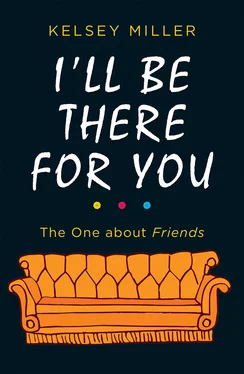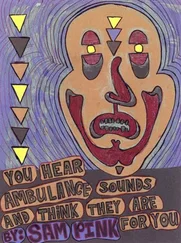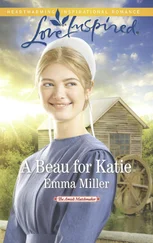With Dream On , Kauffman and Crane had a hit under their belt, an Emmy nomination, 2as well as the experience of running a show. Most importantly, they now had Kevin S. Bright. “When we first started, technically speaking, we weren’t partners. I was their boss,” Bright later explained during his own interview with the Television Academy Foundation. Along with John Landis, Bright was an executive producer on Dream On . But it became clear very quickly that Bright was a natural—and necessary—collaborator in the Kauffman-Crane partnership. “He’s really good at a lot of stuff that a) we’re not great at, and b) we really don’t care about,” Crane explained. Bright knew how to pull together a great crew, manage all the nuts and bolts of producing, and usher a show through postproduction. “[ Dream On ] was a show that lived and died in the editing room,” explained Crane, and that was entirely Bright’s domain. Plus, they just clicked. “We had shorthand with each other,” Bright explained with a shrug. “We were three ex–New Yorkers.”
Two years into Dream On , the three of them formed Bright/Kauffman/Crane Productions, the company that would produce not only Friends , but Veronica’s Closet , Jesse , and, finally, Joey . Shortly thereafter, their deal with Universal was up for renewal, and while Dream On was riding high on its surprise success, the studio didn’t seem all that eager to make them an offer, or even meet with them. “It was one of those things that happens in television, where the company you’re working for feels you owe them,” said Bright. “Rather than they owe you for creating success for them.” Every other studio was very much interested, though, and after meeting with Les Moonves (then president of Lorimar Television, which soon combined operations with Warner Bros.), they signed a development deal, and left Dream On .
The team had only two real deal breakers in mind when it came to future projects: first, no single-star shows. Dream On ’s premise had required lead actor Brian Benben to appear in nearly every scene of every episode, an exhausting demand that often made shooting difficult for him and therefore everyone else on the production team. That was a relatively easy ask given that few network shows relied so heavily on a single character. The second ask was trickier. “We said to [Moonves], ‘The only thing we don’t want to do is a family in a living room with four cameras.’” It was 1992, the golden age of families in living rooms: Blossom , Roseanne , Full House , Home Improvement , Family Matters , and The Fresh Prince of Bel-Air . Networks were minting money with these multicamera comedies, and not much else. If you weren’t a family in a living room, then you’d better be football.
Thus came Bright/Kauffman/Crane’s next show, and first major flop: Family Album . It was one of two series they developed during their first year with Warner Bros., the other being Couples —a single-camera comedy about three couples living in the same apartment in New York City. That show, they said, was the obvious winner. It flowed right out of them, Crane recalled: “We wrote it in, like, a week! We love it… It’s smart, it’s single-camera, it’s got everything we want.” Family Album , on the other hand, was multicamera, family-focused, and in terms of writing, “[like] pulling teeth.” No one wanted a show like Couples , no matter how good it was. They wanted, as one network executive told them, “a white-collar Roseanne .”
Backed into the living-room corner, they did their best. “We did everything right. We drew on our own lives. It was about this family from Philadelphia. We had characters based on our parents…and yet, for some reason, the DNA was wrong, and it was incredibly hard to write.” Still, Couples was passed over, 3while Family Album was picked up and ran on CBS. For six weeks.
Family Album was no one’s dream project, but its cancellation was still a blow. “Around that point we were feeling not so much like the cable wunderkinds anymore,” recalled Bright. “We were more like the cable disappointment.” Dream On had been a hit, but one hit (and a surprise niche hit at that) is a meager track record. “It was interesting to us how fast the hype about you can change. ‘Golden children, eh. You’re golden children with tarnish now.’”
That same year, The Powers That Be , a show that Kauffman and Crane had created (but hadn’t run) for Norman Lear was canceled, too. While they’d hardly written a word of it beyond the pilot episode, they were still credited creators, and thus now had another failure with their name on it.
Back to the drawing board, again. Sitting in their office at Warner Bros., the three ex–New Yorkers started thinking back to the days before they came out to Hollywood, when they were just out of college and a little lost—but not alone. Kauffman and Crane thought about their old friends from the theater days, and how they’d banded together as a makeshift family, in those years before they’d made their own families, before careers had taken shape, and adult life was still amorphous. “We were looking at that time when the future was more of a question mark. Maybe ’cause that’s what we were feeling in that moment,” said Kauffman. Maybe there was something there. After all, she thought, “everybody knows that feeling.”
Weeks later, it was done. Kauffman and Crane delivered a seven-page pitch for a show they titled Insomnia Café. 4
“This show is about six people in their twenties who hang out at this coffeehouse,” they wrote. “It’s about sex, love, relationships, careers…a time in your life when everything is possible, which is really exciting and really scary.”
The following pages went on to describe potential storylines and character sketches—all drawn from friends in their social circle back in New York, with a little bit of their twentysomething selves thrown in. But ultimately, it was that single and incredibly simple concept that sold the show: “It’s about friendship, because when you’re young and single in the city, your friends are your family.” It was straightforward and endearing, and in 1994, it was exactly what NBC was looking for.
“We wanted to reach that young, urban audience, those kids starting out on their own,” remembered Warren Littlefield, former president of NBC Entertainment, in his 2012 book, Top of the Rock: Inside the Rise and Fall of Must See TV. He’d been studying the ratings one morning, reviewing numbers in the major markets—New York, Dallas, Los Angeles, Saint Louis. “I found myself thinking about the people in those cities, particularly the twentysomethings just beginning to make their way… It was very expensive to live in those places as well as a tough emotional journey. It would be a lot easier if you did it with a friend.” He’d been hunting for a Friends -esque concept ever since, “but none of the contenders had ever lived up to our hopes.” Then Kauffman and Crane showed up.
In the historic pilot season of 1994, their pitch remains legendary. “The pitch was like two old friends telling you a story. The jokes were already there,” added Karey Burke, who was an NBC executive at the time. “It was theater.”
It’s a testament to just how good the pair was at pitching that it was such an easy sell. Because, beyond that famous log line and the six character sketches, they really didn’t have much else—including a plot or even a solid premise, according to Crane. “I remember pitching it and we were saying, ‘Yeah, and basically we’re just in their lives. And here are the six characters, and they’re specific. But yeah, we’re in and out of their apartments and they go about doing stuff. That’s your show.’”
Читать дальше












